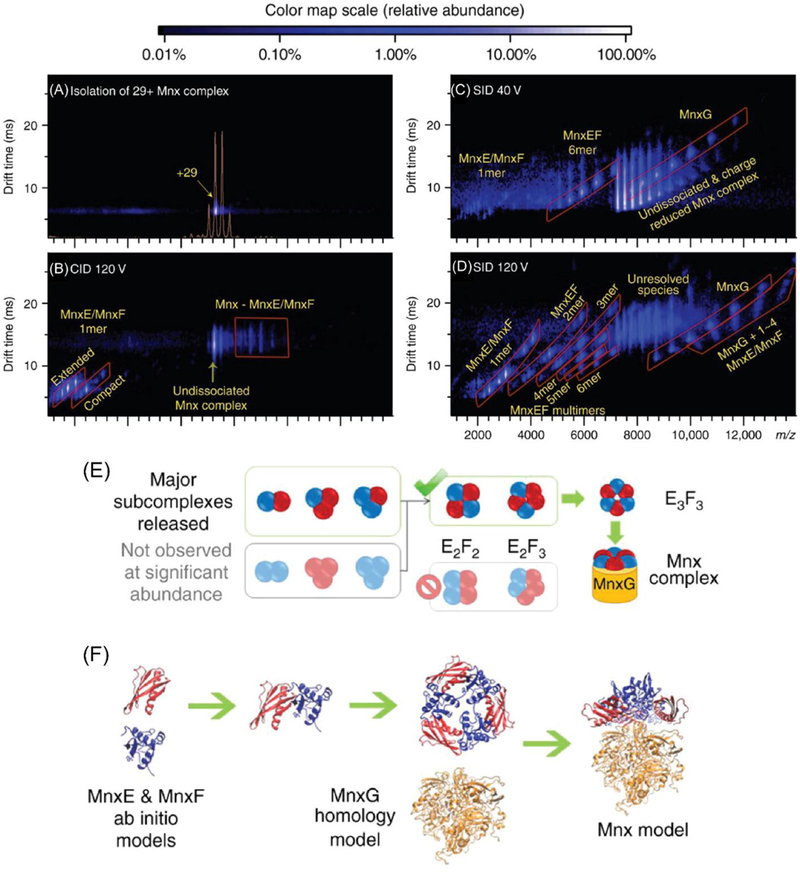Figure 9.

A structural model of the Mnx complex was built using information from SID experiments. (A) Ion mobility displays the selection of the 29+ Mnx complex, (B) products from 120 V CID, products from (C) 40 V and (D) 120 V SID. (E) Subcomplexes produced in SID revealed the topology of this complex. Because dimers released from the complex were predominantly E1F1 and trimers were predominantly E1F2 and E2F1, the strong presence of heterodimers and heterotrimers suggested a symmetric structure consisting of alternating E and F subunits. (F) Using the topology suggested from SID data in combination with additional restraints such as CCS and surface labeling results, computational models were generated to allow for docking experiments modeling the Mnx complex. Reprinted with permission from Macmillan Publishers Ltd: Nature Communications (Romano, C.A., Zhou, M., Song, Y., Wysocki, V.H., Dohnalkova, A.C., Kovarik, L., Paša-Tolić, L., Tebo, B.M. Biogenic manganese oxide nanoparticle formation by a multimeric multicopper oxidase Mnx. Nature Comm. 2017, 8:746), copyright 2017.
